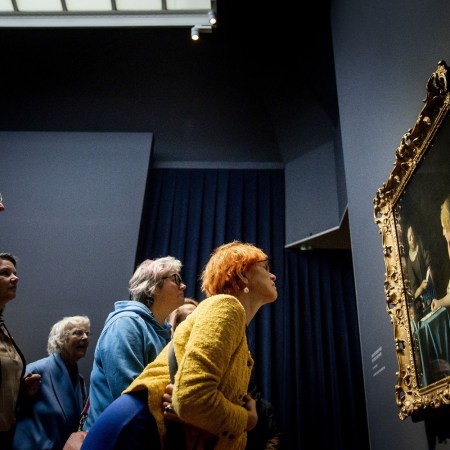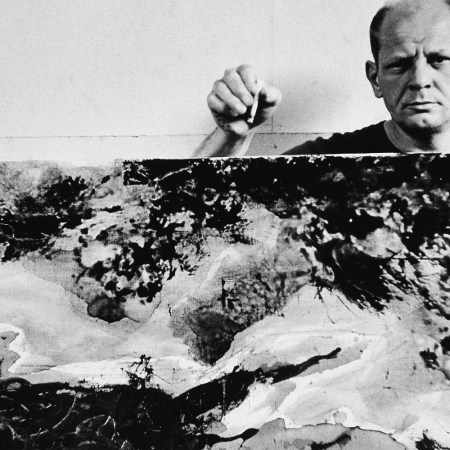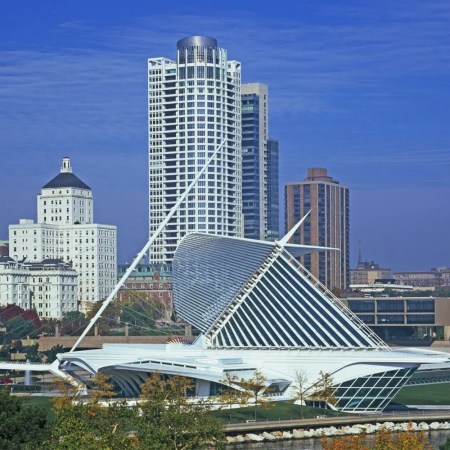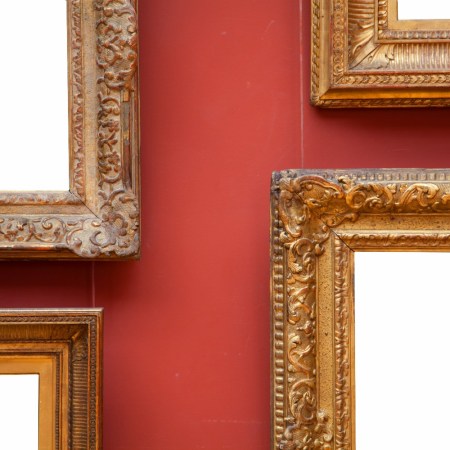When Alexa Meade says, “I’m taking reality and painting it on top of itself,” she’s not trotting out some arcane metaphor. She’s describing, quite literally and with remarkable concision, the groundbreaking, nuanced and now-iconic method by which she turns real-life people and objects into seemingly two-dimensional works of art.
Meade’s reality-bending work takes on many forms at the intersection of various media, but she is perhaps best known as the artist who makes people look like paintings of people. Looking at a picture of Meade’s work, it initially appears to be a vivid 2D painting, but in fact, she has painted directly on her subjects, collapsing their depth in a remarkable manipulation of perception. In practice, Meade’s work embodies a kind of reverse verisimilitude: while other artists model their art after the real world, Meade is trying to make the real world look more like art.
“It’s almost like it’s an augmentation of reality,” she tells InsideHook. “I’m providing this layer — this experience of viewing the real world, but through a layer.”
Throughout her career, Meade has found a dual canvas and subject in everything from grapefruits to Ariana Grande to massive, 4,000-square-foot Rodeo Drive exhibitions “completely painted and transformed” into Meade’s own “world made of art.” But that wasn’t always the plan for the L.A.-based artist.

Among her ever-increasing body of fans and followers, Meade’s origin story has become the stuff of legend. Since her work first shot to fame as a viral internet sensation back in 2010 via the pre-Instagram blogosphere, countless features, articles and profiles have echoed the story of the four-year Capitol Hill intern primed for a career in politics and the eleventh-hour college-art class that changed it all.
At this point, Meade has the line down: “Before I became an artist, I really was not an artist.” Almost entirely self-taught, Meade first became fascinated with her ability to manipulate reality through art after a sculpture professor at Vassar handed down the baffling assignment to “create a sculpture that felt like a landscape but was not a sculpture of a landscape.” Meade, who “had observed light and shadow and thought it was interesting before,” began by putting black paint on the grass where shadows were, and the rest is history.
In the years since Meade first kissed Capitol Hill goodbye and began painting on eggs, grapefruits and friends in her parents’ basement, she’s come to see her “nontraditional background” as a gift. “Because I didn’t study painting in college, I don’t have this view that a painting starts with priming a canvas or painting a base coat,” she says. “I was allowed to essentially kick out the foundation from underneath and just start with step one being a completely different step of, let’s say, having somebody wash their face before I put paint on them.”
For Meade, her tradition-thwarting marriage of subject and canvas contains the power not only to play with perception, but also to “completely re-imagine someone’s identity.”
I like to really try to think about this person in front of me. How do I capture them as they are?
“I’m taking a person who’s there and then I am painting a version of them on top of themselves,” she says. While Meade says “the core person” shines through in the subject’s eyes and expressions, “everything else about them has been overwhelmed by my re-interpretation with colored brushstrokes and texture and patterns that I might be painting on them — so much so that I’m able to collapse their depths and make them look like a two dimensional painting.”
But Meade isn’t just aiming to completely overwrite her subject. Painting live subjects is “an incredibly intimate process” in which Meade has the opportunity to engage with and capture another living, breathing human in a kind of Pygmalion daydream.
“I like to really try to think about this person in front of me,” she says. “How do I capture them as they are?” Often, Meade finds her answer in small details, taking note of everything from the way her subjects carry and present themselves to the music they choose to play while preparing for a shoot in the studio.
“If I were an artist painting on canvas, I would have complete agency and control over how I presented this image on this separate surface,” she says. But the subject inevitably informs the final product when it comes to Meade’s living canvases because, she says, “the model is the artwork themselves.”

As her career has progressed, Meade has found ways to make her work increasingly interactive — not only with her subject, but also her audience.
In December 2018, Meade’s Immersed in Wonderland exhibition drew over 40,000 guests to a massive, 4,000-square-foot gallery space. While the space became a backdrop for many a selfie, snapping photos was far from the extent to which guests could engage with Meade’s work. Throughout various installation environments, guests could don hand-painted costumes, play a hand-painted baby grand, “or just [observe] the artwork in a way that is perhaps different from the traditional art gallery, because you can touch everything and interact with it,” says Meade. “It was just really cool to see all these different people’s way of expressing themselves in this world made of art.”
Meade’s found more than a few ways of expressing herself in that world as well. Since her early days of internet virality, Meade has worn many hats. Most recently, she was an Artist in Residence at Google, leveraging the company’s DeepView technology to generate a rainbow-hued depth map of a 3D scene … which she then imposed, by hand, over the scene itself.
You don’t have to professionally do politics to affect change. You can be an artist. You can use your voice in whatever field you are in.
This isn’t the first time Meade has stepped outside of her studio. While the artist may have left her blossoming political career behind years ago, her 2016 short film, “Color of Reality,” won CNN’s Great Big Story Art as Impact Award for its striking statement against gun violence.
“It’s pretty interesting to think that I used to want to do politics because I want to affect social change, and now I’m able to see that you don’t have to professionally do politics to affect change,” says Meade. “You can be an artist. You can use your voice in whatever field you are in.”
Her art has penetrated other fields of study as well. She’s given lectures at Stanford and Princeton — including in the mathematics department. “Mathematicians are some of the most creative people I’ve ever met,” she says. “I’m really fortunate that I get to work with them, brainstorm with them, and create art in tandem with mathematicians.”
Meade’s effortless blending of art, media, tech and academics comes as no surprise given the ease with which her work transcends the boundaries between reality and representation. She has created an entire world made of art, and within it, she can create unhindered by the limitations of a canvas.
“It’s my paint that has modified the physical world,” says Meade. “It’s like a real-life augmented reality.”
This article was featured in the InsideHook newsletter. Sign up now.






















